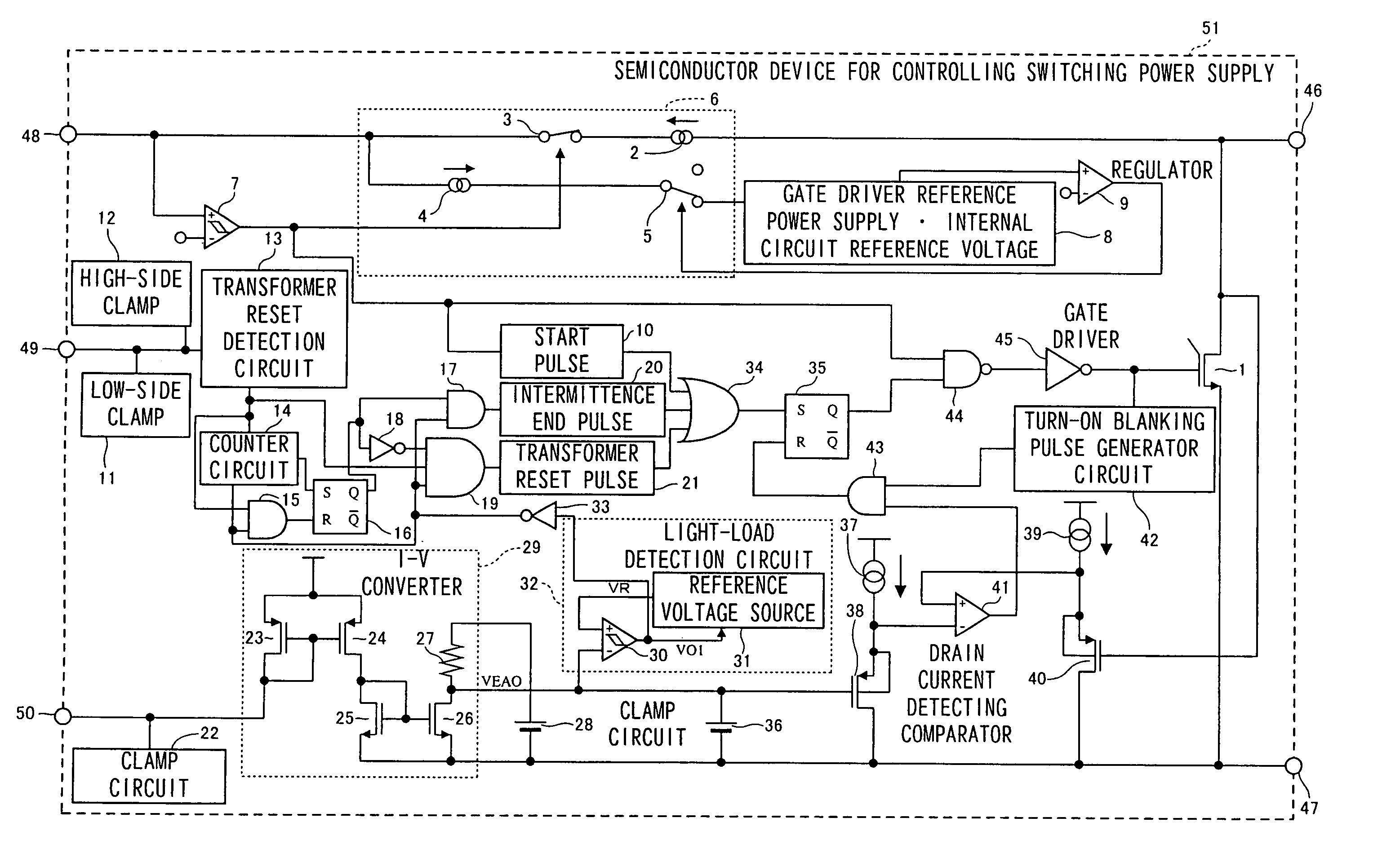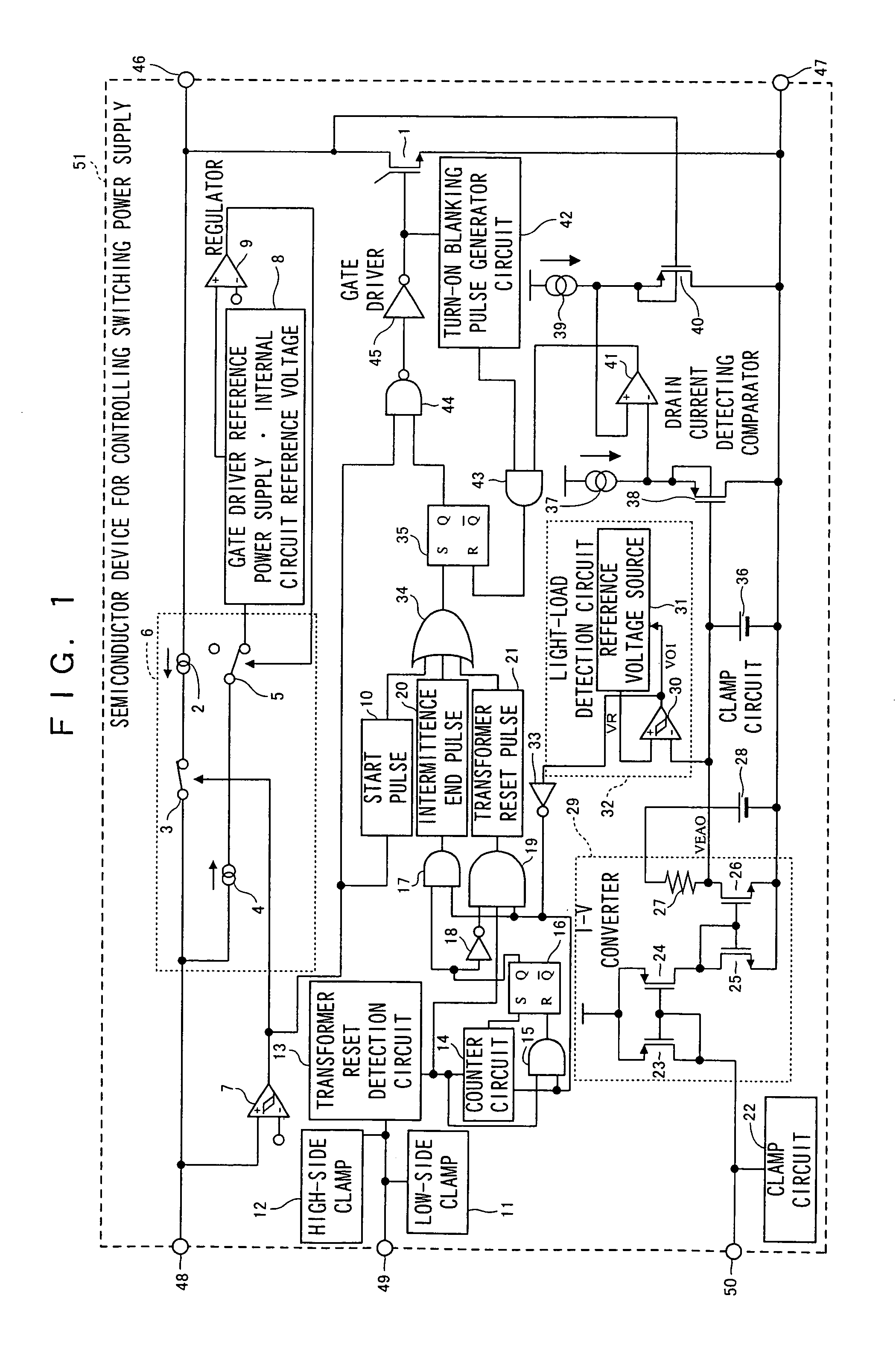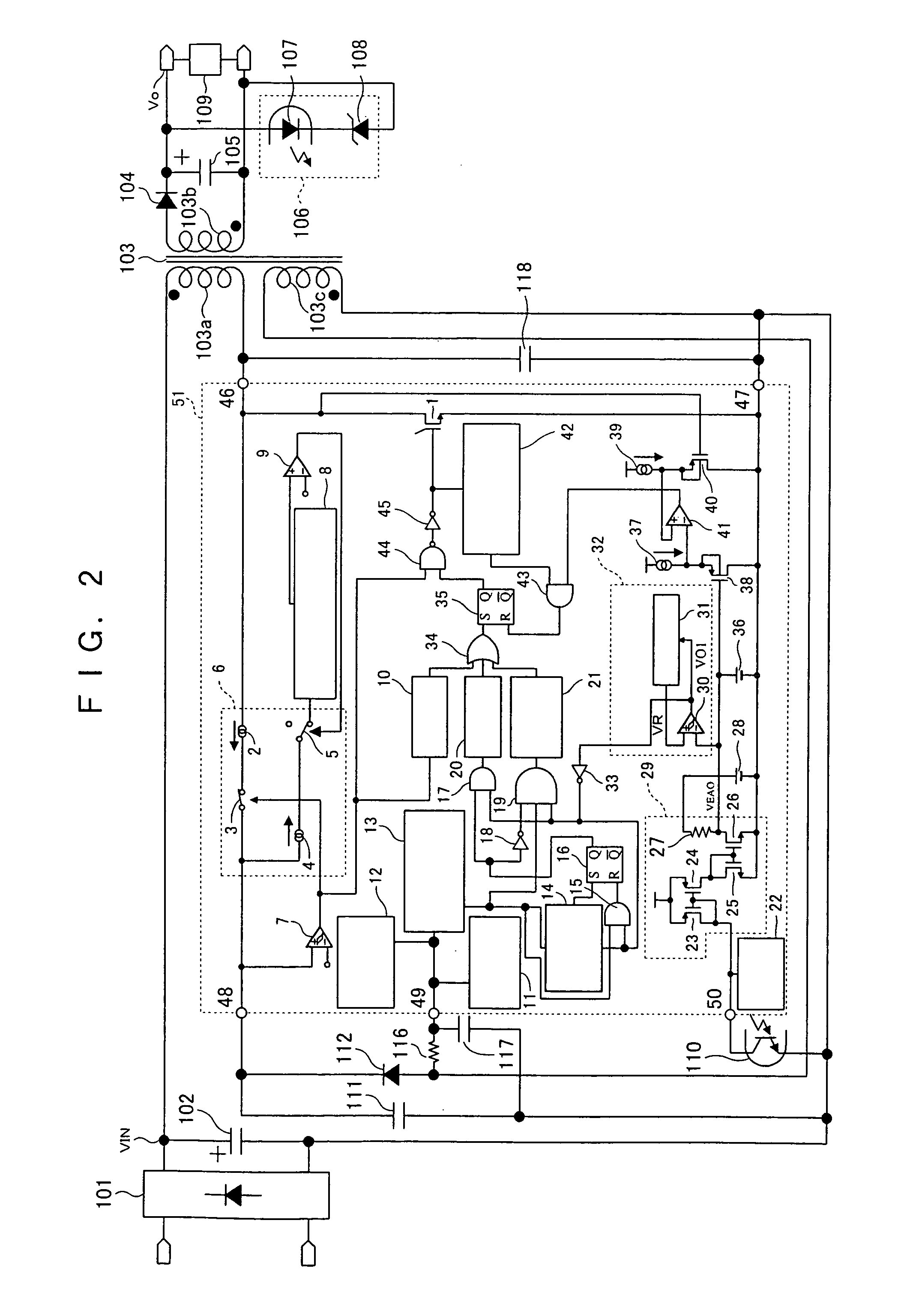Semiconductor device for controlling switching power supply
a technology of switching power supply and semiconductor device, which is applied in the direction of electric variable regulation, process and machine control, instruments, etc., can solve the problems of increasing the cost of the overall circuit including the semiconductor device for controlling the switching power supply, reducing the current, and reducing so as to reduce the current loss of the switching element at light load, reduce power consumption, and achieve high power efficiency
- Summary
- Abstract
- Description
- Claims
- Application Information
AI Technical Summary
Benefits of technology
Problems solved by technology
Method used
Image
Examples
embodiment 1
[0046]A semiconductor device for controlling a switching power supply will be discussed below according to Embodiment 1 of the present invention.
[0047]FIG. 1 is a circuit diagram showing a structural example of the semiconductor device for controlling the switching power supply according to Embodiment 1. FIG. 2 is a circuit diagram showing a structural example of the switching power supply configured using the semiconductor device for controlling the switching power supply according to Embodiment 1.
[0048]In a semiconductor device 51 for controlling a switching power supply, a switching element 1 including a power MOSFET and a control circuit for performing switching control on the switching element 1 are integrated on the same semiconductor substrate. The semiconductor device 51 is constituted of five terminals: an input terminal 46 and an output terminal 47 of the switching element 1, a starting voltage detecting terminal of the semiconductor device 51 for controlling the switching...
embodiment 2
[0105]A semiconductor device for controlling a switching power supply will be discussed below according to Embodiment 2 of the present invention.
[0106]FIG. 9 is a circuit diagram showing a structural example of a semiconductor device for controlling a switching power supply according to Embodiment 2. FIG. 10 is a waveform chart showing a switching operation in the semiconductor device for controlling the switching power supply according to Embodiment 2. FIG. 11 is a circuit diagram showing a structural example of a delay circuit in the semiconductor device for controlling the switching power supply according to Embodiment 2.
[0107]FIG. 9 shows that a delay circuit 52 is added to FIG. 1. The following will discuss the meaning of the delay circuit 52.
[0108]First, the limit of the maximum frequency will be discussed below.
[0109]Quasi-resonance is made by a ringing choke converter (RCC) Since self-excitation is basically obtained, the lighter load, the higher oscillation frequency.
[0110]...
embodiment 3
[0123]A semiconductor device for controlling a switching power supply will be discussed below according to Embodiment 3 of the present invention.
[0124]FIG. 12 is a circuit diagram showing a structural example of the semiconductor device for controlling the switching power supply according to Embodiment 3. FIG. 13 is a circuit diagram showing a structural example of a delay circuit in the semiconductor device for controlling the switching power supply according to Embodiment 3. FIG. 14 is a waveform chart showing the operations of the delay circuit in the semiconductor device for controlling the switching power supply according to Embodiment 3.
[0125]Unlike the delay circuit 52 in the semiconductor device for controlling the switching power supply according to Embodiment 2 of FIG. 9, FIG. 12 shows a structural example for automatically changing delay time from an I-V converter 29 through a node 59 according to a load detected by a control terminal 50. A current is drawn by mirror circ...
PUM
 Login to View More
Login to View More Abstract
Description
Claims
Application Information
 Login to View More
Login to View More - R&D
- Intellectual Property
- Life Sciences
- Materials
- Tech Scout
- Unparalleled Data Quality
- Higher Quality Content
- 60% Fewer Hallucinations
Browse by: Latest US Patents, China's latest patents, Technical Efficacy Thesaurus, Application Domain, Technology Topic, Popular Technical Reports.
© 2025 PatSnap. All rights reserved.Legal|Privacy policy|Modern Slavery Act Transparency Statement|Sitemap|About US| Contact US: help@patsnap.com



